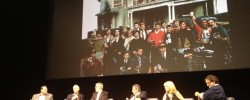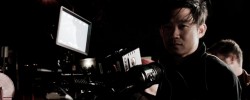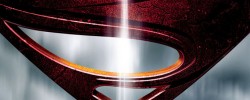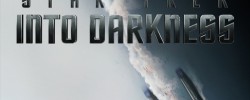
Review: Blue Jasmine (2013)
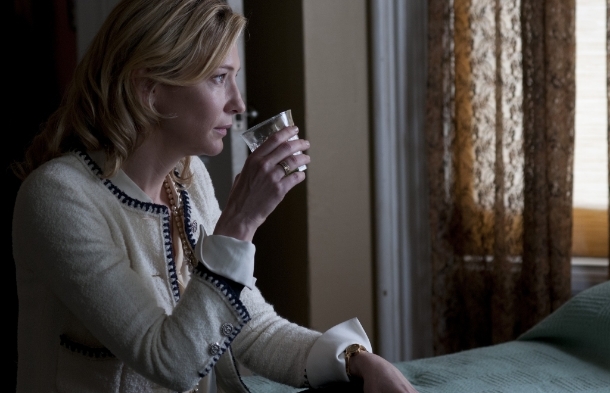
Cast: Cate Blanchett, Alec Baldwin, Sally Hawkins
Director: Woody Allen
Country: USA
Genre: Drama
Official Trailer: Here
Editor’s Notes: Blue Jasmine is now out in limited release.
Woody Allen doesn’t much care for shades of gray these days. Would you, if you wrote and directed a film per year for four decades? Wouldn’t you start to rely on lazy shortcuts and cannibalize your own catalogue of punch lines, plotlines, and themes? Wouldn’t you, nearing 80, just want to get the damn thing done and go to bed at a reasonable hour?
 Given his geriatric age and vast output, Woody’s diminishing returns are, at least, understandable. You can’t stay spry forever. Still, I know 28-year-olds with less lust for life than what Woody displays in Vicky Christina Barcelona and, his latest, Blue Jasmine. The man remains forever curious about the human heart, even as his chops as a writer/director continue to wear with age.
Given his geriatric age and vast output, Woody’s diminishing returns are, at least, understandable. You can’t stay spry forever. Still, I know 28-year-olds with less lust for life than what Woody displays in Vicky Christina Barcelona and, his latest, Blue Jasmine. The man remains forever curious about the human heart, even as his chops as a writer/director continue to wear with age.
Blue Jasmine, for starters, tells a story we haven’t heard before from Woody. Where Match Point echoed Crimes and Misdemeanors and Midnight in Paris aped The Purple Rose of Cairo, Blue Jasmine doesn’t feel like a complacent riff off an earlier, greater Woody Allen picture. This fact alone marks progress, given the director’s shameless tendency to recycle his own material.
Blue Jasmine offers a portrait a wealthy socialite (Cate Blanchett) whose life craters after the arrest and suicide of her husband (Alec Baldwin), a Bernie Madoff-like businessman. The film ping-pongs between their marriage and its aftermath, when a disgraced Blanchett moves in with her sister (Sally Hawkins), a grocery store clerk who lives above a Mexican restaurant in San Francisco. The two make for a discordant pair; Hawkins’ low-key lifestyle doesn’t quite mesh with Blanchett’s hyper-refined palette for Pilates, fundraisers, and Louis Vuitton luggage. The trauma of living among non-millionaires turns Blanchett into a pill-popping, over-sharing time bomb.
Graded on a generous curve - i.e. against his films of the last 20 years - Blue Jasmine ranks among Woody’s best late-period achievements.
This may sound like a film in which Blanchett’s character learns to commingle with the working class folks she’d spent her life ignoring. It’s not. Blue Jasmine isn’t “Two Broke Girls,” even if it’s also about a snobbish Manhattanite who’s forced to slum it after a Madoff-style scandal robs her of her wealth. The film doesn’t go down that easy. Despite its battery of stock characters and plot contrivances, Blue Jasmine remains a disarmingly bitter pill.
Much of the film’s depth comes courtesy of Blanchett, who delivers perhaps the most compelling performance of her career. Channeling Gena Rowlands’ neurotic ticks in A Woman Under the Influence, Blanchett renders Woody’s caricature sketch into something approaching a real human being. She’s created a character at once sympathetic and profoundly unlikeable. That’s no easy task, given how lazily Woody crafts his characters at times. In the world of Blue Jasmine, the rich drink martinis and the working class slam PBRs. The wealthy have season tickets to the Yankees and the poor bark at boxing matches on TV. The rich talk about Park Avenue; the poor talk with their mouths full.
 Blue Jasmine doesn’t rely on cultural stereotypes nearly as much as some of Woody’s other recent features; there’s nothing as egregious here as Rachel McAdams and her cartoonishly upper-crust parents from Midnight in Paris. Still, far too often, Woody lets his script devolve into insipid clichés. Stereotypes, as the old Onion joke goes, are a real time-saver, and here they save Woody the time he should have spent crafting unique, three-dimensional characters.
Blue Jasmine doesn’t rely on cultural stereotypes nearly as much as some of Woody’s other recent features; there’s nothing as egregious here as Rachel McAdams and her cartoonishly upper-crust parents from Midnight in Paris. Still, far too often, Woody lets his script devolve into insipid clichés. Stereotypes, as the old Onion joke goes, are a real time-saver, and here they save Woody the time he should have spent crafting unique, three-dimensional characters.
Plot contrivances, it turns out, are another great way to save time. It takes work to propel a narrative in a logical, organic way. It takes less work, for example, to have characters continuously run into each other on the street in a city of eight million people. Or have an innocuous man (Louis C.K.) suddenly reveal himself to be a liar for the sake of moving a plot forward. Or have the woman who ends Baldwin and Blanchett’s marriage never even appear on screen. These particular moments feel so slapdash, one can’t help but wonder how a younger Woody would have brought such promising material to life. We get few concrete specifics in Blue Jasmine, only a parade of plot points.
Despite Woody’s slide toward laziness, moments of genuine comic and dramatic heft do exist. Note, for example, the film’s parallel tourism montages. The first shows Hawkins and her ex-husband (Andrew Dice Clay) in NYC, yukking it up and snapping selfies like two unapologetic tourists. The second, in San Francisco, shows the “lower class” characters parading Blanchett around town to take pictures of the sites. As everyone smiles for the camera, Blanchett’s look of anguish says it all: Your idea of a good time is not my idea of a good time. Blanchett, we deduce, would never engage in anything so vulgar and lowbrow as loud-mouthed tourism. Rather than have his characters come right out say this, Woody finds a way to illustrate this idea cinematically. And it’s funny, too.
Much of the film’s depth comes courtesy of Blanchett, who delivers perhaps the most compelling performance of her career.
Graded on a generous curve - i.e. against his films of the last 20 years - Blue Jasmine ranks among Woody’s best late-period achievements. It’s an amiable picture anchored by fine performances and a resolution that avoids the cutesy neatness of a movie like Midnight in Paris. His skills as a dramatist may have weakened, but, thankfully, Woody still has the power to enlist an A-list cast to bring his caricatures to life.
Related Posts
![]()
![]()
Latest posts by Soheil Rezayazdi (see all)
-
Joshua Brody
























